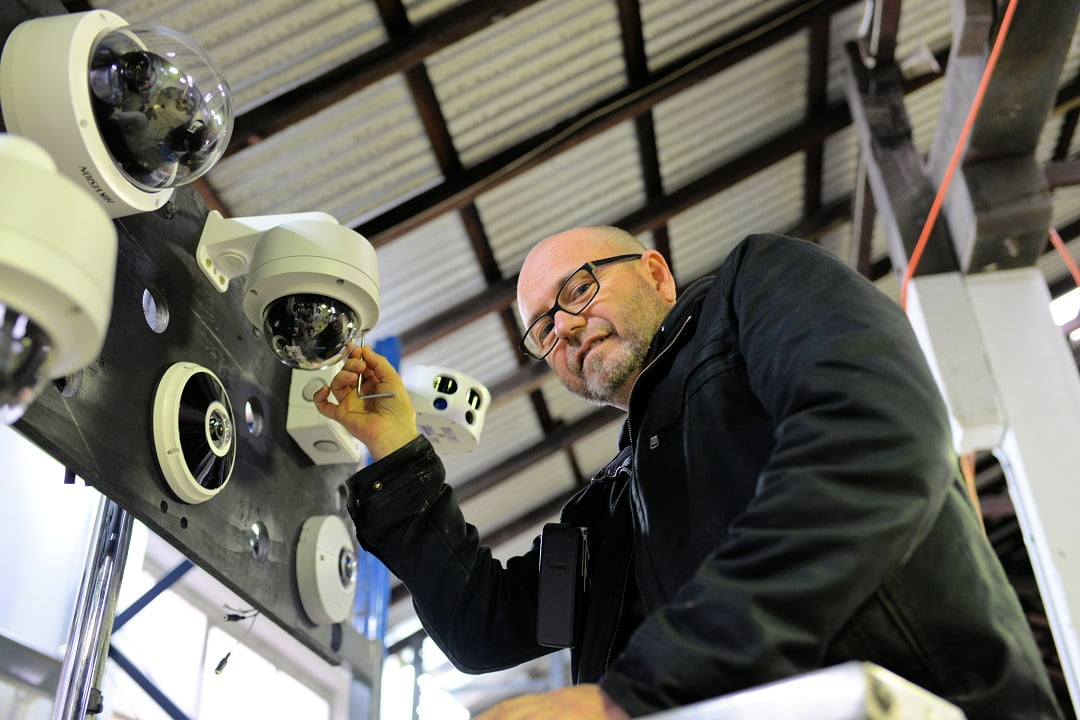Nothing is so central to a surveillance solution as the video management system that drives it. Whether you’re an end user, or an installer, there’s plenty to think about when it comes to VMS and more and more products tout their ability to meet ever more complicated operational requirements.
WHEN you start thinking about VMS is hard to know where to start. Keeping things simple is beneficial – end users should think operationally and integrators should think operationally, while taking into account those aspects of the system that will best allow them to support an end user’s operational requirements.
As well as being highly functional and easy to install, you want the system to be easy to maintain, with loads of troubleshooting and maintenance functions built into the system that allow you to an immediate overview of system health, as well as allowing you to drill into specific aspects of functionality. Automatic upgrades are a good thing. So is having integrated help capabilities, as well as tutorials, will make installers lives easier, as will remote servicing capacity. Integrators love systems they can tune up from the back deck on an idle Sunday afternoon while keeping a weather eye on the kids in the backyard. Seek fingertip control, the ability to securely manage a system almost as part of consciousness stream from wherever it is you or your techs happen to be.
Other things to look for include the security level of the solution – it’s ability to support encryption, including encryption of camera signals using HTTPS. Clever camera drivers will allow the support of spanking new cameras without having to wait months for overworked software developers to bring VMS platforms up to speed. Licensing is another issue. There’s nothing wrong with licensing fees – they pay for teams of talented developers. But you don’t want to pay too much, either, or be constrained not by architecture or technology but by a spiderweb of licensing regulations.
Although many developers are simplifying licensing programs, some are complicated and many are too expensive. You need to find a supplier who doesn’t prey on I/O devices connection, or try to charge for the connection of each individual coaxial input. Instead, you want a license per digital stream, no matter how many legacy cameras you’ve woven in. An holistic approach to licensing will make things less complicated when you’re building integrated solutions.
If your system is server-based, then pay attention to the number of inputs each sever can support. So long as you can retain full functionality, fewer servers is going to be less expensive. Think about storage, too. Look for compatibility with affordable storage options all the way down to the drives the system can manage and keep an eye out for the ability to direct storage of video streams to locations anywhere on a network.
You want multi-layered integration capability, whether the user needs it now or not. You don’t want your ability to support a system hamstrung by its inability to communicate with other systems. Think about the usual things – access and intrusion detection, lifts, lights, air conditioning and automation. Think about IVA, too. More and more, end users want their surveillance system to present management with valuable data.
Many VMS systems have streamlined camera commissioning, doing away with Mac addressing using auto camera finders and undertaking HDD setup without the integrator getting involved – these are appealing qualities that will reduce installation time and complexity. You should look for a VMS that requires integrators get professional training – this will filter out lower end competition, increase the distributor and manufacturer investment in the integrator, as well as ensuring solutions are best fit for purpose.
According to David Keidar of Conceptual Technology Solutions, what makes one VMS better than another sheets home to a number of functionalities.
“Obviously the more supported devices (cameras, networked I/O devices, control keyboard, etc), the better,” he explains. “Customers of hardware agnostic VMS expect to have minimal restrictions in their choice of supported and compatible hardware. It is an advantage to support current hardware shortly after it is released to the market while support of legacy equipment will guarantee suitability to established CCTV systems that are being gradually upgraded and have a mix of old and new devices.”

David Keidar
According to Keidar, device integration ‘depth’ is very important so as to unleash connected devices’ full potential.
“While ONVIF or basic RTSP support will enable connection of most cameras, customers often want to have access to unique features such as edge analytics and recording, de-warping of 360 degrees cameras and more,” Keidar says.
“Having the majority of cameras’ configuration available via the VMS (rather than via the camera’s web interface or a dedicated application), simplifies the configuration and ongoing maintenance.
“Key VMS considerations for installers include things like ease of software install process, minimal pre-requisites, a simple and efficient configuration tool, good license management – including easy support of system expansion and hardware platform changes. You also want a quick device exchange process.”
Something else that’s important is high level interface-ability to integrate with other electronic security systems.
“Larger electronic security systems typically require exchange of event information between different electronic security systems as well as central logging capability,” Keidar says. “Typically, these would comprise of access control, alarm, intercom/emergency call points, etc.
“Capabilities such as associating video image with an emergency call point and intercom calls or access-related security breaches are a common requirement. Linking recorded video footage to the event log of an access control system, for example, will save significant time in post event analysis.”
Keidar says an intuitive user interface will improve operators’ efficiency and will reduce response time, while good, readily available phone and onsite technical support is a necessity. And when it comes to the future, he argues there’s a lot to take into account.
“The key current trends in VMS development include things like cloud-based services and support, support for complex, federated architectures, the ability to handle video acquisition and distribution to mobile devices and advanced incident management and reporting tools,” Keidar says.
Over at ICS-Group, Scott Myles says there’s a lot that might make one VMS a better choice than another.
“There are many things to consider when investing in a video management system,” he explains. “For example, does the system suit the needs of the organisation? Is the system capable of working in conjunction with the company’s standard operational procedures? What problems are you trying to solve? And what is it that the client is trying to achieve with the system?
“From my experience, finding the answers to these questions assists in the decision making process when faced with the myriad of choices that one now has in the VMS landscape,” Myles says. “One of the key drivers that makes one system better than the other is intuitiveness – having a system that is easy for operators to learn and use is of utmost importance when considering the effectiveness of newly deployed systems.
“Other important factors include reliability, or more importantly, choosing a system that is fit for the client’s operational needs. In many instances, mainly due to a lack of investigation and cost saving influences, systems that do not provide the required viewing and infrastructure platforms have been chosen instead of opting for a solution with enterprise capabilities.”
“Integration with cameras and edge devices, as well as integration into third-party systems such as access control, intercoms and other BMS systems is also very important. Having the ability to support a wide variety of camera brands and models creates choice in an application and leverages competitiveness in the marketplace, as does a solution’s ability to exploit interoperability between sub-systems.”
Myles says key current trends in VMS development relate to automation in support of operational procedures.
“Traditionally, video management systems have been designed to show multiple cameras on several monitors – this can become problematic as the attention span of operators and their ability to be able to comprehend and identify certain behaviours across multiple images is extremely limited,” he explains.
“I argue the way we look at video needs to change. Video analytics is becoming a more reliable and affordable technology and now integrates with many tier 1 enterprise applications. This gives us the ability to start the process of automation so as to take away the need for user intervention.
“In the foreseeable future, video management systems will change from passive reactive systems to dynamic and active solutions providing real benefits when extreme events occur,” says Myles. “Instead of having a whole video wall of cameras on display, new systems will show video that is activated by certain behaviours, running in a shopping mall, a person travelling in the wrong direction at an airport, a vehicle parked too long in a loading zone, a person of interest entering a building. As these events occur operators will be able to assess each situation and address them in real-time.”

Myles says other trends in VMS development he is seeing include the unification of access control and business analytics, with many of the manufacturers now offering solutions that are engineered to work cohesively within a single platform. And when it comes to operational considerations that should govern VMS choice for users, Myles keeps his operational focus.
“There are many things to consider when considering a VMS for your organisation,” he explains. “There’s the size of the business and how the system will fit within the company’s operational procedures. Will the system predominately be used as a post event analysis, or will the system be actively used as a crime prevention tool?
“Either way, many considerations need to be investigated to ensure the choice will grow with the business and provide required functionality into the future. As part of this, you need to ask whether the organisation requires all the functionality a video management software product provides, or whether an appliance-based NVR might be more practical to the client’s needs?
“When it comes to licensing and software maintenance agreements, most VMS vendors have upfront and ongoing licensing fees, however there is an increasing trend from a collective of vendors that do not charge ongoing maintenance fees,” Myles explains. “Another consideration is integration with third-party systems, is it important to choose a VMS that integrates with the existing access control and security system?
“Operationally, having an intuitive user interface with tools such as layered site maps or 3-D Mapping, which provide operators with the exact location of the camera within the facility, makes it much easier to learn the system and track activity between cameras. Other features for consideration are mobility, the ability to be able to push or pull video clips or still images to and from on-site guard’s smart devices. This can play an essential role in assisting on-the-ground staff with crime prevention.”
Something else Myles argues must be taken into account is incident evidence gathering.
“Having a system that can easily find the relative video clips is an important consideration when selecting a VMS,” he says. “Most systems offer single and multi-camera playback with some having smart search functions, such as searching areas of interest within the scene, or searching for objects based on size, shape, direction and colour parameters. Additionally, it’s important to have a system that allows for the inclusion of extra cameras during a multi-view synchronised playback session. This allows operators to include new cameras on the fly without the instigation of a new session.”
Key VMS considerations for installers and integrators take into account meeting the operational needs of end users, while also covering the requirements of an integration business.
“For installers, the key considerations include reliability, ease of installation, support and training,” says Myles. “Having a provider that is considerate of all these factors is of the upmost importance. Choosing a product distributor that has tiered levels of support backed by the vendor will assist in all phases from design, implementation and final commissioning.
“It is important for installers to operate in partnership with the provider to ensure that assistance is available if and when required. Ultimately as the buck usually stops with the customer-facing installer, having strong support mechanisms when things go wrong will ensure that your reputation remains intact.” ♦









